The Kyphoplasty Cost in South Korea approximately starts from KRW 13829707 (USD 10300)
Kyphoplasty (KP) is defined as an effective treatment modality for decreasing pain and modifying kyphotic deformity in an osteoporotic vertebral compression fracture. These procedures are performed via a tiny incision on the skin one or two for every bone which will be treated. A needle is placed into the vertebral body by X-ray guidance and the technique is carried out via the needle. This can prevent a large scar and larger physical trauma of open surgery.
Patients going to South Korea for Kyphoplasty and any medical illness/surgeries are treated by doctors who have international accreditation. To enable lifelong education and training, all Korean Medical Association (KMA) members working at medical facilities are needed to complete at least 12 credits of training yearly, extending from workshops, online training, publications, lectures, symposiums, CMEs, and conferences. To perform kyphoplasty state-of-the-art equipment and cutting-edge devices are used in hospitals of South Korea. That is the reason it is a popularly technology-savvy country.
The success of kyphoplasty in South Korea is mostly due to the low costs of excellent-quality medical procedures and medical services. The cost of surgeries like kyphoplasty would be lower than that of countries like the USA. The complete cost of your medical tourism in South Korea will be subject to your procedure, the selection of a hospital, and the duration of stay.
| Country | Cost | Local_currency |
|---|---|---|
| Greece | USD 11000 | Greece 10120 |
| India | USD 6000 | India 498900 |
| Israel | USD 28000 | Israel 106400 |
| Poland | USD 15500 | Poland 62620 |
| South Korea | USD 10300 | South Korea 13829707 |
| Spain | USD 28000 | Spain 25760 |
| Turkey | USD 12000 | Turkey 361680 |
| United Arab Emirates | USD 14000 | United Arab Emirates 51380 |
| United Kingdom | USD 3500 | United Kingdom 2765 |
Treatment cost
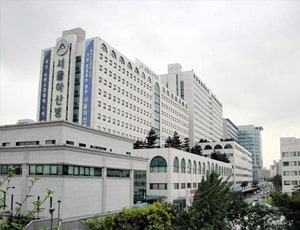
Asan Medical Centre located in Seoul, South Korea is accredited by ISO. Also listed below are some of the most prominent infrastructural details:

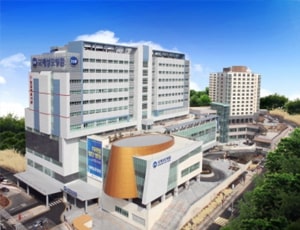
International St. Mary's Hospital located in Seoul, South Korea is accredited by JCI. Also listed below are some of the most prominent infrastructural details:
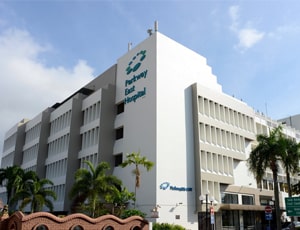
Parkway East Hospital located in Joo Chiat Pl, Singapore is accredited by JCI. Also listed below are some of the most prominent infrastructural details:
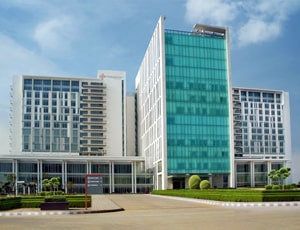
Types of Kyphoplasty in Medanta - The Medicity and its associated cost
| Treatment Option | Approximate Cost Range (USD) | Approximate Cost Range (INR) |
|---|---|---|
| Kyphoplasty (Overall) | 5732 - 8946 | 467791 - 738207 |
| Balloon Kyphoplasty | 2238 - 5608 | 182888 - 463576 |
| Vertebroplasty | 2835 - 6725 | 226890 - 555892 |
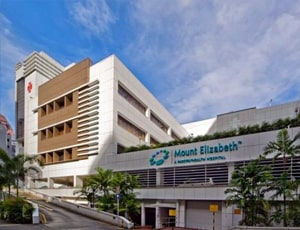
Mount Elizabeth Hospital located in Singapore, Singapore is accredited by JCI. Also listed below are some of the most prominent infrastructural details:
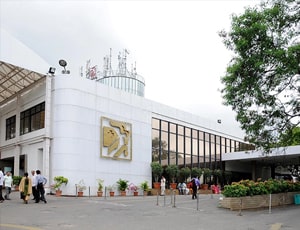
Types of Kyphoplasty in Apollo Hospitals and its associated cost
| Treatment Option | Approximate Cost Range (USD) | Approximate Cost Range (INR) |
|---|---|---|
| Kyphoplasty (Overall) | 5727 - 8808 | 455373 - 728966 |
| Balloon Kyphoplasty | 2213 - 5576 | 184038 - 458431 |
| Vertebroplasty | 2761 - 6699 | 226611 - 556972 |
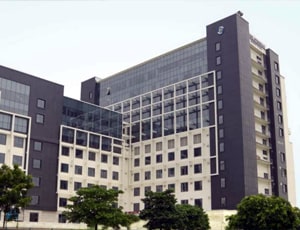
Types of Kyphoplasty in Venkateshwar Hospital and its associated cost
| Treatment Option | Approximate Cost Range (USD) | Approximate Cost Range (INR) |
|---|---|---|
| Kyphoplasty (Overall) | 5066 - 8154 | 414863 - 668167 |
| Balloon Kyphoplasty | 2038 - 5054 | 167042 - 415623 |
| Vertebroplasty | 2527 - 6107 | 208433 - 498498 |
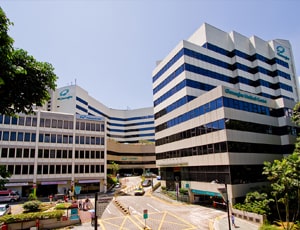
Gleneagles Hospital located in Napier Road, Singapore is accredited by JCI. Also listed below are some of the most prominent infrastructural details:
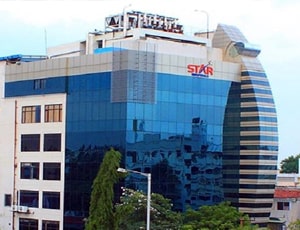
Types of Kyphoplasty in Star Hospitals and its associated cost
| Treatment Option | Approximate Cost Range (USD) | Approximate Cost Range (INR) |
|---|---|---|
| Kyphoplasty (Overall) | 4613 - 7496 | 384007 - 605643 |
| Balloon Kyphoplasty | 1890 - 4689 | 153153 - 379284 |
| Vertebroplasty | 2302 - 5540 | 189394 - 457977 |
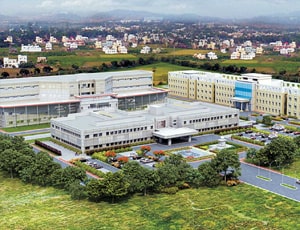
Types of Kyphoplasty in Global Health City and its associated cost
| Treatment Option | Approximate Cost Range (USD) | Approximate Cost Range (INR) |
|---|---|---|
| Kyphoplasty (Overall) | 5547 - 9134 | 451978 - 750989 |
| Balloon Kyphoplasty | 2299 - 5637 | 187930 - 456667 |
| Vertebroplasty | 2810 - 6623 | 234771 - 550465 |
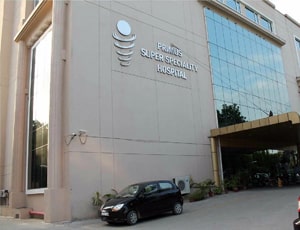
Types of Kyphoplasty in Primus Super Speciality Hospital and its associated cost
| Treatment Option | Approximate Cost Range (USD) | Approximate Cost Range (INR) |
|---|---|---|
| Kyphoplasty (Overall) | 5095 - 8116 | 416872 - 665661 |
| Balloon Kyphoplasty | 2024 - 5052 | 166385 - 414760 |
| Vertebroplasty | 2532 - 6110 | 207660 - 497639 |
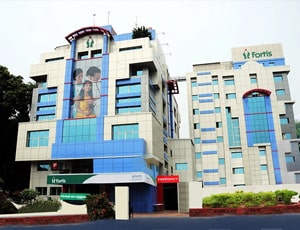
Types of Kyphoplasty in Fortis Malar Hospital and its associated cost
| Treatment Option | Approximate Cost Range (USD) | Approximate Cost Range (INR) |
|---|---|---|
| Kyphoplasty (Overall) | 5051 - 8148 | 416796 - 668042 |
| Balloon Kyphoplasty | 2022 - 5094 | 166479 - 415095 |
| Vertebroplasty | 2533 - 6103 | 208154 - 498260 |
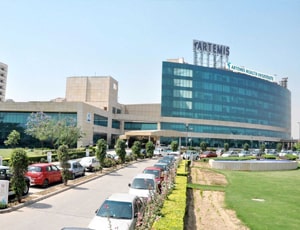
Types of Kyphoplasty in Artemis Health Institute and its associated cost
| Treatment Option | Approximate Cost Range (USD) | Approximate Cost Range (INR) |
|---|---|---|
| Kyphoplasty (Overall) | 5519 - 8891 | 468346 - 721807 |
| Balloon Kyphoplasty | 2253 - 5511 | 186483 - 466377 |
| Vertebroplasty | 2811 - 6806 | 232759 - 561297 |
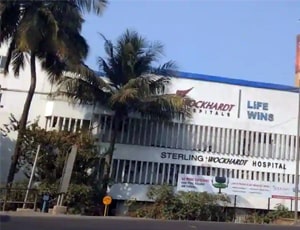
Types of Kyphoplasty in Sterling Wockhardt Hospital and its associated cost
| Treatment Option | Approximate Cost Range (USD) | Approximate Cost Range (INR) |
|---|---|---|
| Kyphoplasty (Overall) | 5056 - 8102 | 417236 - 667635 |
| Balloon Kyphoplasty | 2033 - 5083 | 165915 - 418019 |
| Vertebroplasty | 2527 - 6064 | 208272 - 497761 |

Types of Kyphoplasty in Medicana International Istanbul and its associated cost
| Treatment Option | Approximate Cost Range (USD) | Approximate Cost Range (TRY) |
|---|---|---|
| Kyphoplasty (Overall) | 6808 - 13302 | 199720 - 405137 |
| Balloon Kyphoplasty | 5065 - 9930 | 152081 - 301227 |
| Vertebroplasty | 6782 - 13382 | 203671 - 398091 |
Kyphoplasty is also known as balloon kyphoplasty. It is a minimally-invasive surgical procedure that can repair spinal fractures caused by cancer, osteoporosis, or benign lesions. It is not used for spinal stenosis treatment.
Kyphoplasty procedure is designed to relieve the intense pain caused by vertebral compression fractures, to stabilize the bone or to bring back some or all of the lost vertebral body height due to the compression fracture. Kyphoplasty or balloon kyphoplasty is a superb replacement of the typical conventional therapies such as analgesic use, bed rest, and bracing. It is a quick remedy for severe pain due to vertebral compression. It eliminates the pain almost immediately and the risk of complications during kyphoplasty is low. However, it is not intended for the treatment of arthritis or intervertebral disc disease. Kyphoplasty is different from discectomy, which is conducted in case of a herniated disc. Discectomy completely removes the damaged or herniated disc from the vertebrae of the patient.
Laminectomy and vertebroplasty are two other procedures that follow different techniques for stabilizing fractures. Laminectomy works by removing the lamina to create space, vertebroplasty works by injecting cement into the broken or cracked spine. For the same reason, vertebroplasty cost is different from kyphoplasty cost.
Kyphoplasty is typically suggested in case of:
Kyphoplasty starts by administering a local or general anaesthesia to the patient. The patient remains unconscious during the entire procedure, and therefore, is not able to feel anything. After the anaesthesia, the patient may receive antibiotics to prevent infection.The patient is then made to lie down on their stomach and is connected to the pulse, heart, and blood pressure monitors. The following the four steps in kyphoplasty procedure:
No stitches are required during the procedure, but the incision is bandaged. The bone cement dries rapidly and forms an internal cast that holds the vertebral body in place. Kyphoplasty procedure takes less than one hour if only one vertebra is being treated.
Typically, kyphoplasty does not have any severe side effects. You may experience some minor side discomfort such as soreness and redness of the skin. These problems usually resolve on their own or with minimal medical management. However, you should consult the doctor in case the symptoms persist for more than a few days.
The chances of risks and complications from kyphoplasty are overall low. But some complications may arise nonetheless. Extravasation is one such procedure that can take place in some cases but it is very rare. Extravasation refers to the leakage of bone cement from where it is supposed to stay. The risk of severe bleeding, nerve injury, spinal fluid leak, paralysis, and pulmonary embolus is less than two percent. Kyphoplasty is a safe procedure but call your doctor right away if you experience severe muscle pain, continues leg pain, back or rib pain that is really bad or gets worse over time, fever, numbness or tingling sensation, and weakness.
Ask your healthcare adviser for the best multiple options and choose the one that meets your expectations
Kyphoplasty cost in South Korea varies from one hospital to the other. Some of the best hospitals for Kyphoplasty offer a comprehensive package that covers the end-to-end expenses related to investigations and treatment of the patient. The Kyphoplasty procedure in South Korea includes the fees of the surgeon, hospitalization and anesthesia as well. Extended hospital stay, complications after the surgery or new diagnosis may affect the overall cost of Kyphoplasty in South Korea.
Many hospitals in South Korea perform Kyphoplasty. For quick reference, the following are some of the leading hospitals for Kyphoplasty in South Korea:
While the speed of recovery may vary from patient to patient, they are still required to stay for about 30 days after discharge. This period is important to conduct all the follow-up tests to ensure that the surgery was successful and the patient can go back to the home country.
Apart from the cost of Kyphoplasty, the patient is also required to pay additionally for daily meals and guest house accommodation. These charges starts from USD 50 per person.
Some of the best cities in South Korea which offer Kyphoplasty are:
The patient is supposed to stay at the hospital for about 5 days after Kyphoplasty for monitoring and care. The doctors team review the patient's recovery during this time with the help of blood tests and imaging scans. Once they feel that everything is on track, the patient is discharged.
There are more than 2 hospitals that offer Kyphoplasty in South Korea. These hospitals have propoer infrastructure as well as offer good quality of services when it comes to Kyphoplasty Additionally, these hospitals are known to comply with the international standards as well as local legal requirements for the treatment of patients.
Some of the top doctors for Kyphoplasty in South Korea are: